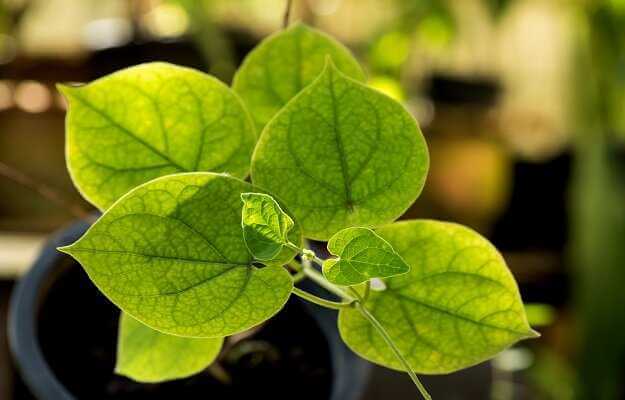- +033 2572 7171
- info@dhanvantary.com

4.5 Rating | 4500 Review

4.5 Rating | 4500 Review
Patola is known as Trichosanthes Dioica. Generally, it is famous with the name of pointed gourd. This is one of the most nutritious cucurbit vegetables that have a great, big reputation in the market of India, during rainy and summer seasons. The plant is of perennial, nectarous.

Plant grows like a vine. Vines are of thick size, pencil like structure which contains ovate, oblong, cordate, unlobed, rigid, dark green color leaves. Their roots are of tube like structure, have tuberous property with long tap root system to manage the plant processes. Flowers are of white color with a tubular appearance. Flowers of this plant are dioecious type. The male flowers are not strobile. Stigma of the plant remains there for minimum around 14 hours and many of the flowers up to 40 to 70 % set fruits. Fruits generally are of size 5 to 9 cm and of spherical orange red wine color after ripe.
Patola or Trichosanthes dioica is a great medicinal plant explained in Ayurvedic literature and in modern science. Patola is mentioned in the several Ayurvedic texts in the treatment of severe diseases, in Ayurveda except Patola it is also known as lulka, tikta, panduka, rajiphala, amritphala, pratika, kushthaha, meki, parvara, kulaka, nagaphala, Karkashacchada and Tiktottama.
Trichosanthes dioica is generally known as Sespadula in English and Parwal in Hindi. It is widely grown in all over the India and more. It is a kind of perennial crop that is highly acceptable due to its availability. This plant is available for eight months in a year, from February to September.
Patola is a Tagalog term for luffa or pointed gourd. This plant relates to that family of vegetables which present normally in the Philippines.
This plant contains various important phytochemical constituents that help plant Patola to combat several diseases. Roots of the plant contain hentriacontane, trichosanthin, saponin, fixed oil, starch Colocynthin, essential oil containing terpens, reducing sugar and traceof tannin. Stems of the Patola contain fatty acids like linoleic, oleic and oleo stearic or trichosanic acid and Cucurbita-5, 24-dienol which also found in mature plant. The leaves of the plant can be eaten as vegetables and contain various biochemical components in some appropriate ratio like 80.5 moisture; 5.4 protein; other carbohydrates 5.8; and mineral matter 3.0% calcium 531; 1.1 fat; 4.2 fiber; and phosphorous 73 mg / 100 g . Fruits also contain active components like riboflavin, vitamin-C, 5- hydroxytryptamine and nicotinic acid and thiamin.
Kingdom
Plantae
Subkingdom
Tracheobionta
Superdivision
Spermatophyta
Division
Magnoliophyta
Class
Magnoliopsida
Subclass
Dilleniidae
Order
Violales
Family
Cucurbitaceae
Genus
Trichosanthes
Species
T. dioica
Pointed gourd or Trichosanthes dioica or Patola is a tropical vegetable crop. The crop is known to Indo- Malayan origin and distribution extensively in eastern parts of India and up to less extent in the other parts of Asia. It is known with different names in different areas, like by parwal, palwal, or parmal names in different parts of India and Bangladesh. Patola is one of the essential vegetables of this region.
|
Hindi / Sanskrit |
English |
||
|
Rasa |
Tikta |
Taste |
Bitter |
|
Guna |
Laghu, Ruksha |
Physical Property |
Light, Dry |
|
Virya |
Ushna |
Potency |
Hot |
|
Vipaka |
Katu |
Metabolic Property (After Digestion) |
Pungent |
It balances kapha and pitta. Approximately all the Acharyas have mentioned the leaf of Patola to manage Pitta Samaka, Nala to manage Kapha Samaka and fruit as Tridosha Shamaka. Roots of Patola are virechanakaraka.
|
Charak Samhita |
Vagbhata |
Sushrut Samhita |
|
|
|
The extracts of roots dichloromethane (DCTD), methanol (METD) and aqueous (AQTD) contain in vitro show paralytic & lethal effect which against the worms.
Charak Samhita mentions the use of Patola in the treatment of Pittaj Prameh. So the use of T. diocia in diabetes management & could be developed as an effective oral agent for treating diabetes mellitus & complications.
Patola shows chemo properties that are present in its root extracts. It reduces the damage done by the carcinogens.
The laxative activity is present in roots and it gives great relieve from constipation.
The Protective role of triterpenoid in the root extracts reduces the inflammation.
The aqueous extract of fruits of this plant is known to control the Cholesterol.
The triterpenoid enriched root extract reduces ascetic fluid.
Roots, Leaves, Fruits
Higher dose causes vomiting and diarrhea.
